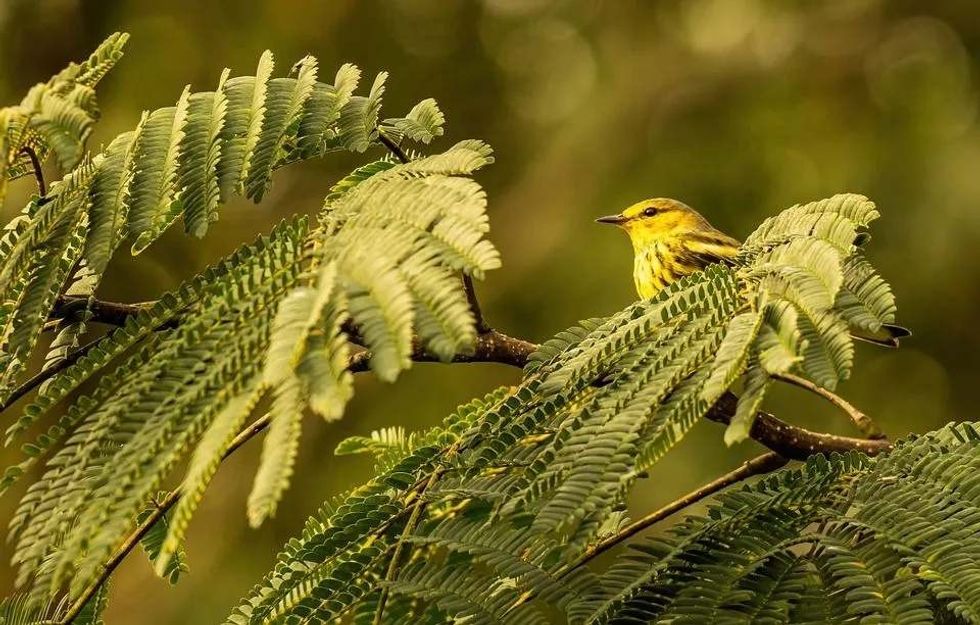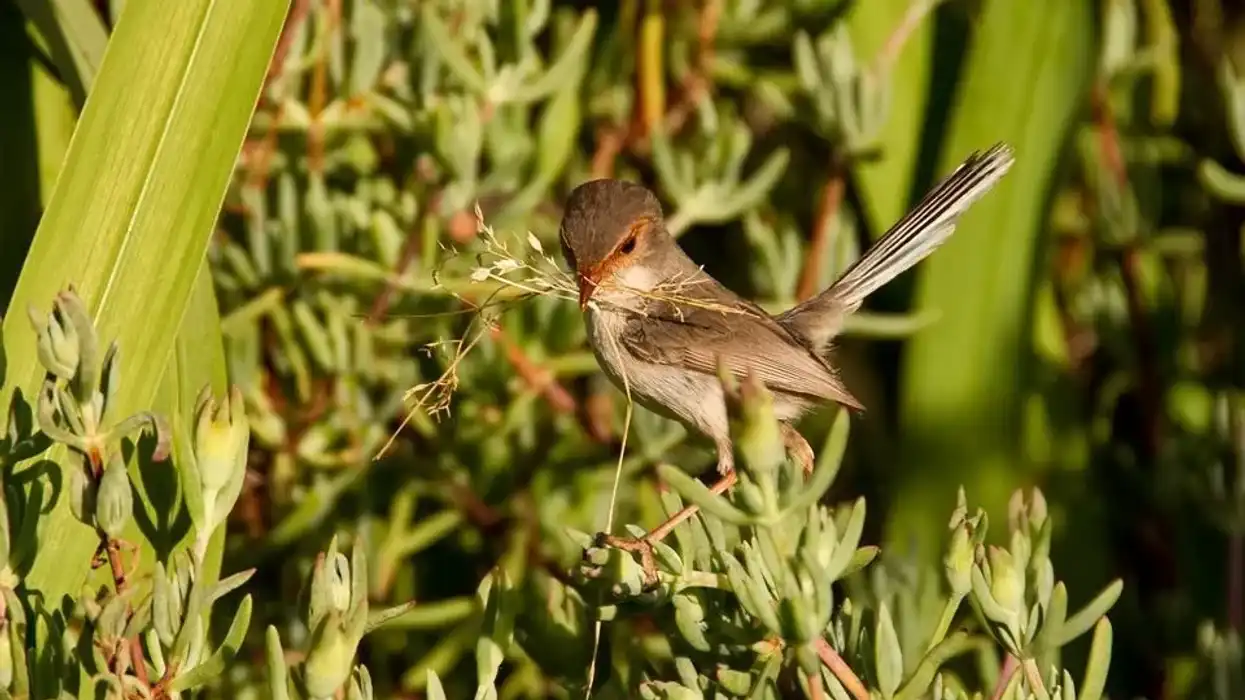The cape may warbler (Setophaga tigrina) is a small-tailed bird belonging to the wood warblers family. They have a tiger-striped bright yellow breast with vibrant chestnut patches.
They spend their summers in the boreal forests of North America and lay their nests high up in the trees. The cape may warbler is also known as a 'spruce budworm specialist' as its population fluctuates with the insects' outbreaks.
These North American birds are friendly in nature and can even be found chasing insects in your backyard. They have high energy levels and are active wood-warblers that have acrobatic techniques for foraging. They are long-distance migrants and their habitat includes a range of different locations.
They can be found in New York during their spring and fall migration. Keep reading to know more about these cute warblers.
If you like reading about birds, be sure to check out the Hawaiian crow and the hooded oriole.
Cape May Warbler Interesting Facts
What type of animal is a Cape May warbler?
A cape may warbler is a type of bird.
What class of animal does a Cape May warbler belong to?
Cape may warbler birds belong to the order Passeriformes, family Parulidae, and the class Aves.
How many Cape May warblers are there in the world?
They are not rare and can be easily spotted during their migration. However, the total number of cape may warblers living in the world is unknown.
Where does a Cape May warbler live?
Cape may warblers can be found in various boreal forests of North America. While breeding, warblers can be found from Northern Alberta, Ontario, Manitoba, and Quebec to Algonquin Provincial Park in the south. In the United States, breeding warblers can be located all over the Adirondack Mountains, Northern Great Lakes region, and other forests.
What is a Cape May warbler's habitat?
Cape may warblers breed in open spruce and balsam fir forests, where spruce budworms can be found in abundance. They usually nest in mature forests but during migration, they can be located in evergreen woodlands, scrub, thickets, or even suburban yards.
Who do Cape May warblers live with?
Cape may warblers share their habitat with other wood-warblers including Magnolia, Blackburnian, and bay-breasted warblers. In their wintering habitat in the West Indies, they often join together with other feeding flocks of mixed species.
How long does a Cape May warbler live?
A cape may warbler bird, of order Passeriformes, family Parulidae, has a lifespan of about four years.
How do they reproduce?
Cape may warblers build their nest high up in the spruce trees near the trunk in their habitat. Their nest is cup-shaped and made up of grass, spruce twigs, pine needles and are covered with sphagnum moss on its exterior.
The breeding territory of warblers is about an acre in size. Male warblers become territorial when it breeds and often involves itself in chasing down rival males. The female warblers are guarded by the males while building their nests.
They fly above the female with their wings held out. The clutch size consists of between four and nine eggs which are white in color with reddish-brown patches.
The number of eggs may increase during outbreaks of spruce budworms. Their clutch size is much larger in number than the average clutch size among warblers. The eggs are incubated by the female cape may warbler.
Both the parents assist in feeding the young hatchlings. The parents, along with their younger ones, remain safe in their nests for several weeks before finally migrating.
What is their conservation status?
The cape may warbler has a stable population and has been granted the status of Least Concern by the International Union for Conservation of Nature or IUCN. No conservation efforts are needed for this species as of yet.
Cape May Warbler Fun Facts
What do hooded warblers look like?

You can identify this mid-sized bird by its short tail and a very sharp, slightly downcurved bill. Adult male warblers appear to be bright in breeding plumage with a yellow breast marked with black streaks and a chestnut-orange cheek patch.
The adult female warblers, in contrast to the males, have a grayish-looking cheek patch and a pale yellow breast with two wing bars on each wing. Young females appear to be much duller with a gray color and a minimal yellow rump.
How cute are they?
These short-tailed birds with distinct patterns and a bright yellow body appear to be very cute.
How do they communicate?
These birds communicate with each other through cape may warbler songs. They sing two different types of songs, one song being slightly higher pitched than the other.
How big is a Cape May warbler?
A cape may warbler size range is approximately 4.7-5.5 in (11.9-13.9 cm) long with a wingspan of 7.5-8.7 in (19-22 cm). They are slightly bigger than chestnut sparrows.
How fast can a Cape May fly?
There hasn't been enough research conducted to calculate the speed. They have, however, been known to have a fast flying speed among warblers.
How much does a Cape May weigh?
A cape may warbler's weight is in the range of 0.3-0.6 oz (9-17.3 g).
What are their male and female names of the species?
The male bird is referred to as a cock and a female bird is called a hen.
What would you call a baby Cape May?
A young hatchling of a cape may warbler is known as a chick.
What do they eat?
The majority of the cape may warbler's diet consists of invertebrates, their main prey being the spruce budworm. The availability of spruce budworms has an effect on the population growth of these birds.
They also consume beetles, flies, ants, bees, moths, and many other different types of insects during the breeding season. These birds can fly for several feet to capture different insects flying in mid-air. During migration, they also eat fruits like small berries and take nectar from various plants.
Are they friendly?
Cape may warblers are friendly in nature and do not cause any harm to humans. Due to their insectivorous diet, they prove to be extremely beneficial in providing natural pest control in your garden and backyard.
Would they make a good pet?
Some cape may warblers can be kept as pets due to their friendly nature. It is, however, very difficult to take care of.
You should keep it as a pet only after proper research and ensuring that you can devote time to take care of it. It is not advisable to keep one in captivity. If you do decide on getting one, take proper care and ensure that its diet has a variety of fruits like berries and different types of insects.
Did you know...
The cape may warbler (Setophaga tigrina) has a unique tubular tongue that is curled. This helps the warbler in collecting the nectar from various plants.
The cape may warbler's fall plumage is duller in comparison to its breeding plumage. During the fall, they have a light crown and a small wing patch.
Spring migration for these North American birds begins in late March and they arrive on their breeding grounds by mid-May. Fall migration commences in August and follows an easterly route through the different Northeastern Atlantic coastal states. By September, they leave their breeding grounds.
The species name of cape may warbler 'tigrina' was given by a German naturalist named Johan Friedrich Gmelin due to its tiger-striped body.
How did the cape may warbler get its name?
The name of this species is given by the famous ornithologist Alexander Wilson. He named the bird after the county Cape May, New Jersey where one of these warblers was shot. Surprisingly, no cape may warblers were seen in Cape May County for over 100 years since the incident.
How does cape may warbler sound?
Tha cape may warbler's call can be described as a high-pitched, 'tsip'. These songbirds have two different types of songs. The first one being a high-pitched 'seet-seet-seet-seet-seet' flight call and the second one being a song made up of two-syllable notes. The former song consists of five notes. The latter is lower in pitch and sang in longer intervals.
Here at Kidadl, we have carefully created lots of interesting family-friendly animal facts for everyone to discover! Learn more about some other birds including the yellow warbler and the Senegal parrot.
You can even occupy yourself at home by drawing one of our wood thrush coloring pages.









